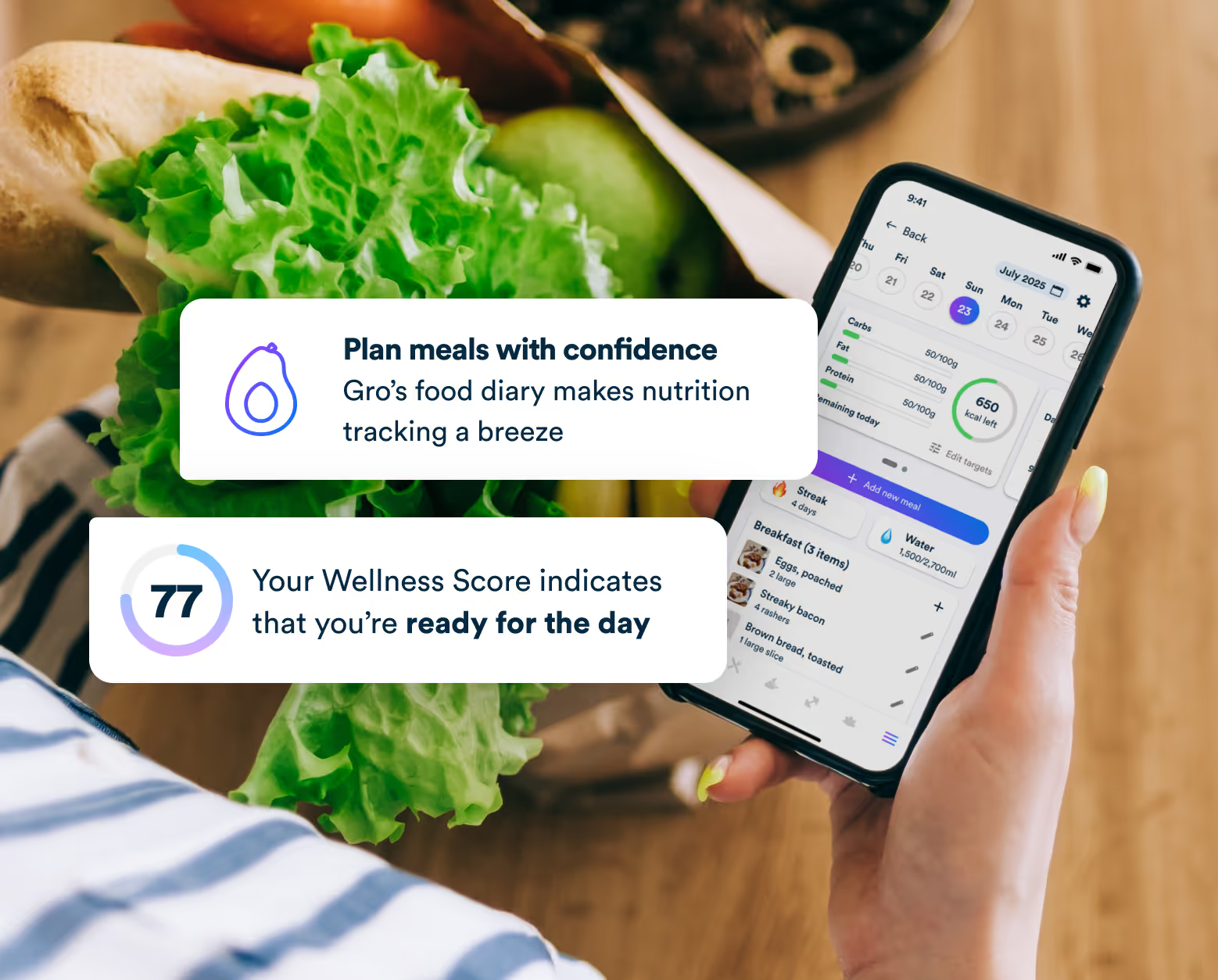High blood sugar, also known as hyperglycemia, is a condition that occurs when there is too much glucose in the bloodstream. If you have high blood sugar, it's important to take steps to bring it down, as well as consider making lifestyle changes to help manage blood sugar long term.
In this blog post, we'll share our 8 top tips for bringing down high blood sugar levels.
1. Exercise
One of the most effective ways to bring down high blood sugar levels is through exercise. When you exercise, your body uses up glucose for energy, which can help lower your blood sugar levels. Aim for at least 30 minutes of moderate-intensity exercise each day, such as brisk walking, cycling, or swimming.
2. Avoid snacking before bed
Keep snacking in the hours before bed to a minimum. Your meals should be satisfying enough that you shouldn’t feel the need to snack - so if you begin to feel hungry, you may want to look at whether you are including enough fat, protein and fibre in your evening meal.
3. Get a good night’s sleep
Sleep is important for hormone regulation, so lack of sleep may lead to higher levels of cortisol in the morning, which can have a knock-on effect of raising blood sugar and inflammation in the body.
4. Reduce stress levels
Include some activities in your day which can help you to relax. This might be listening to music you enjoy, reading or doing a hobby. Relaxation exercises, such as mindfulness, can also help to reduce stress levels.
5. Stay Hydrated
Drinking water is another simple and effective way to lower your blood sugar levels. When you're dehydrated, your blood sugar levels can rise, so it's important to drink plenty of water throughout the day. Aim for at least eight glasses of water per day, and more if you're exercising or in a hot environment.
6. Dietary changes
How many carbohydrates you eat is one of the most important factors to consider when it comes to managing blood sugar, as they have the greatest impact on our blood glucose levels out of all macronutrients. In comparison, protein has a more modest effect, while the impact of dietary fat is very minimal. This explains why replacing carbohydrates with healthy fats and protein can immediately improve blood glucose levels.
As a general rule, if you are eating carbohydrates, it is best to avoid consuming them on their own if you want to keep your blood glucose levels well balanced. That is because eating carbs alongside protein, fat, or fibre slows down the delivery of glucose into the bloodstream. This explains why some carbohydrate sources like beans, which are also rich in protein and fibre, have a low GI.
7. Save the carbs for last
Interestingly, having the non-carbohydrate part of our meal first can also help us achieve better blood glucose control. Studies show that having protein, fat or fibre before eating a high carbohydrate food dampens the blood glucose response, as these three nutrients slow down our digestion before we start eating the starchy portion of our meal.
What this means is that if we eat our protein and vegetables first, our side of starchy vegetables or grains will increase our blood glucose levels more slowly. Of course, this is not a license to go overboard with our carb intake, as the total amount is still what’s most important. However, this strategy can be used anywhere and can be especially handy when we know we will indulge in some higher carbohydrate foods. For example, if we decide to have a slice of cake during a special occasion, having a low-carb meal or snack beforehand helps us keep our blood sugar levels more stable.
8. Consider the time of day
We often hear that having carbohydrates first thing in the morning is important. Indeed, when we think about breakfast, high-carb foods such as cereal, hash browns, bread, smoothies and juice often come to mind. Unfortunately, this may actually be the worst time to eat carbs, especially if we're highly insulin resistant. Our bodies are least insulin sensitive in the morning, which means they are not as good at metabolising carbohydrates. This is caused by hormonal changes that occur in the early morning hours, which also contribute to the natural rise in glucose known as the dawn phenomenon.
It remains unclear just how much of an impact carbohydrate timing alone has on blood glucose control in the long term. However, research shows that a low-carb breakfast packed with protein and healthy fats can be beneficial for those with type 2 diabetes. A recent study found that a low-carb egg-based breakfast kept blood sugar levels a lot more stable for the next 24 hours than a standard high-carb meal of oatmeal, fruit and low-fat yoghurt. So if we’re looking to improve our blood glucose levels, breakfast seems like a good place to start.
Eating carbohydrates too close to bedtime is also not the best strategy for preventing high blood sugar. Ideally, we want to have our carbohydrates around the times we are most active, such as before a workout. This way, our muscles can use the glucose in our blood for fuel. Exercise also improves our insulin sensitivity, which means our muscles can pull more glucose from the bloodstream and store it as glycogen. For this reason, timing carbohydrates after we’ve been physically active is also an excellent strategy for reducing the impact that carbs have on our blood sugar levels.
Managing high blood sugar levels is crucial for preventing complications of diabetes. By following these strategies, you can effectively bring down high blood sugar levels and maintain healthy blood sugar levels over time. If you are struggling to manage your blood sugar levels, talk to your doctor about other strategies that may be effective for you.


